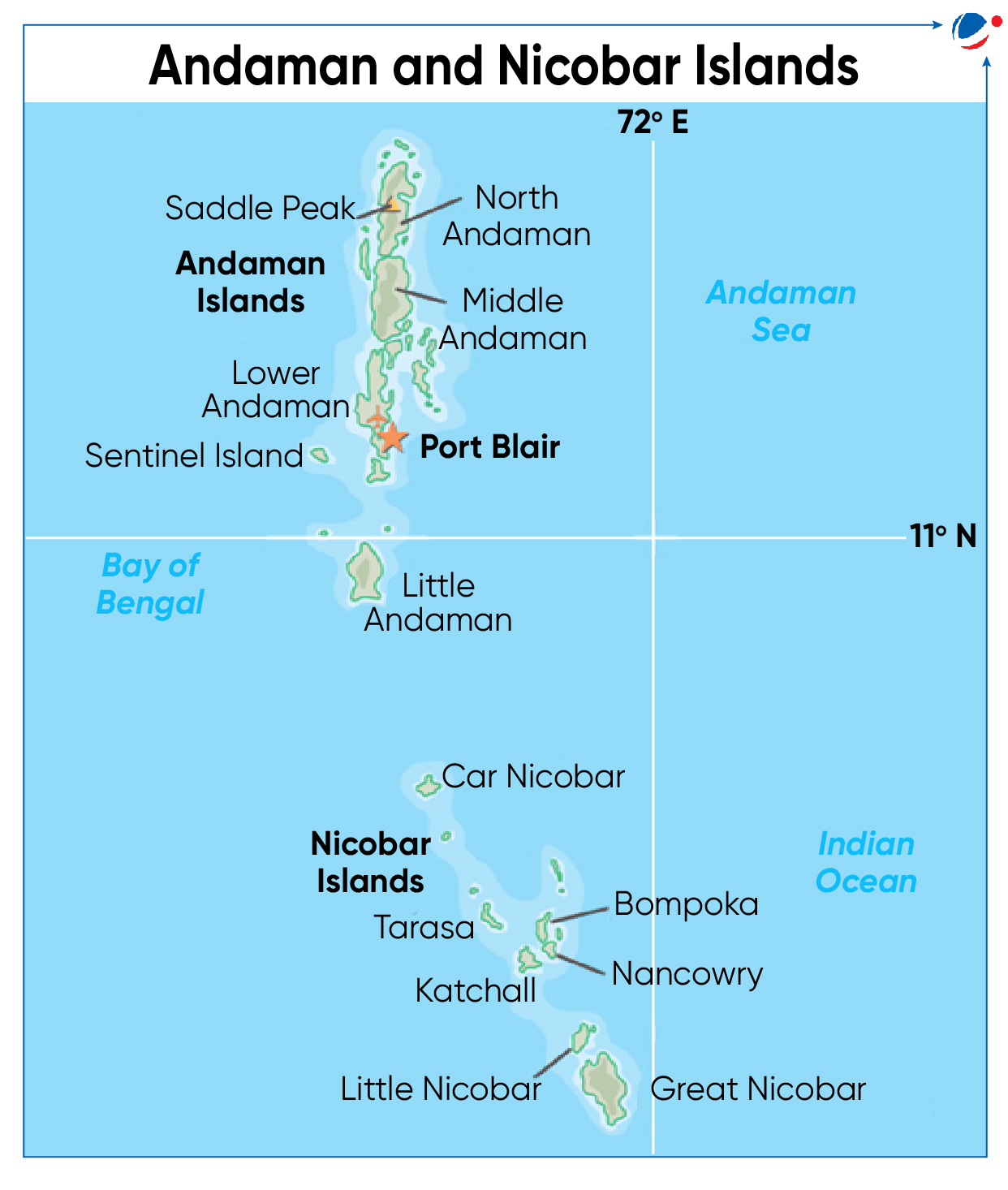Why in the News?
NITI Ayog prepared a Draft Report on Social Impact Assessment (SIA) Study for Greenfield International Airport – Great Nicobar.
More about the News
- It is a part of proposed "Holistic Development of Great Nicobar Island (GNI) in Andaman and Nicobar Islands" project.
- Key-findings of the report
- Positive Impact
- Increase in economic, employment and business opportunities.
- Land value will increase once the area gets developed.
- Negative Impact
- Loss of productive land for agriculture and own land for dwelling units.
- More influx of outside population and loss of privacy.
- Positive Impact
 About Great Nicobar Island (GNI)
|
About the "Holistic Development of Great Nicobar Island (GNI) in Andaman and Nicobar(A&N) Islands" Project
- The project is proposed by A & N Administration under the guidance of Govt. of India and NITI Aayog.
- The project was granted in-principal forest clearance and environmental clearance in 2022.
- Implementation Agency: Andaman and Nicobar Islands Integrated Development Corporation (ANIIDCO) (incorporated under the Companies Act 1956).
- As a part of Integrated Development, the following projects are proposed:
International Container Transshipment Terminal (ICTT) |
|
Green Field International Airport |
|
Township and Area Development |
|
Power Plant |
|
Need for Project and Its Importance
- Strategic Location: Indira Point is about 25-40 km from the major international sea route which carries about 20-25% of global sea trade and 35% of world oil supplies.
- This strategic location presents immense opportunities to further strengthen India's trading position in the world by developing an ICTT.
- Currently, nearly 75% of India's transhipped cargo is handled at ports outside India. Colombo, Singapore and Klang handle more than 85% of this cargo.
- Counter foreign power consolidation: As with respect to military expansion and port creation, foreign powers have increased its activities in the Indian Ocean Region (IOR). For instance, China's String of Pearls to encircle India.
- Improving Connectivity: At present there is very limited connectivity of the GNI with the Indian mainland and other global cities. The prime modes of travel are shipping and helicopter.
- Thus, need for setting up of a large Greenfield airport with a much greater capacity than the existing one (INS Baaz Indian Naval Air Station).
- Promoting sustainable tourism: To attract high-end tourists interested in tropical forests, adventure tourism, beach tourism, water sports as scuba diving etc.
- The Green Airport Project will put A&N on the global tourist destinations map due to proximity with upcoming Senang City, the Phuket Island and Langkawi Island etc.
Concerns related to the project
- Environmental concerns:
- Loss of top soil in the construction areas.
- Sewage waste generation at power plant site pollute the adjacent water bodies,
- Mangroves on the eastern flank will be affected due to port construction.
- Artificial illumination on the beach can affect the sea turtle nesting and hatchlings.
- Threat to fauna: ICTT which is expected to be developed at Galathea Bay, one of the world's largest nesting sites for the leatherback turtle.
- Both the leatherback turtle and the Nicobar megapode, species listed under Schedule I of the Wildlife (Protection) Act, 1972, face critical threats from this development.
- Social: In 2022, the Tribal Council of Great Nicobar and Little Nicobar withdrawn its No-Objection certificate (NOC) for the project due to the administration's lack of transparency and the hasty consent process from tribal communities.
- A portion of the land identified as "uninhabited" in the NITI Aayog plan is ancestral territory for the Great Nicobarese people.
- Health: The Shompen, who have had limited contact with the outside world, remain highly vulnerable to infectious diseases.
- The proposed transshipment terminal overlaps with Shompen community areas, posing risks to their health and survival.
- Natural Disaster Vulnerability: A&N are situated in a high-risk seismic zone, raising fears that the development could lead to catastrophic environmental consequences.
Way forward
Mitigation Measures Suggested in Environmental Impact Assessment (EIA) report:
- The planning will be in accordance with landscape planning concepts to ecogniz major landscape changes.
- During the breading seasons of leather back turtles i.e. between November to February construction activities on the offshore to be halted.
- Sodium vapor lights should be used for lightings, as sea turtles are less affected by it.
- Implement Integrated Solid waste management system has been planned in GNI development
- Strict measures will be adopted to ensure that none of the worker ever trespasses the Shompen area.
- Implement Right to Fair Compensation and Transparency in Land Acquisition, Rehabilitation and Resettlement Act, 2013 for displaced people.



